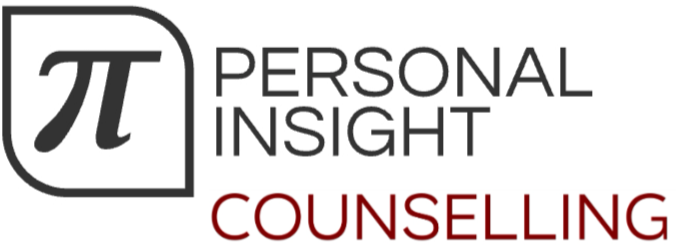Relationships can be a source of profound joy, but they can also challenge our sense of identity, security, and self-worth. Sometimes, the patterns we develop within these bonds become entrenched, leading to recurring conflicts or power dynamics that feel almost impossible to break. In such instances, therapy—and particularly Transactional Analysis—can offer invaluable insights and tools. Below, I explore two client experiences that highlight the importance of seeking support, understanding one’s emotional reactions, and setting healthy boundaries.
1. When One Partner Wants You ‘In a Box’
One client shared that his wife repeatedly asked him to stay quiet, docile, and—figuratively speaking—confined to a ‘box’ of her expectations. This request left him feeling diminished and disempowered. Although the language he used might suggest something severe (words such as ‘beaten’ and ‘forced’), the essence of the issue was a perceived power imbalance: she dictated how he should behave, while he tried to acquiesce.
In Transactional Analysis, we often examine dynamics through the lens of Parent, Adult, and Child states.
- Parent State might be the one giving directives or imposing rules (“Stay quiet!”, “Don’t do that!”).
- Child State could be responding submissively or rebelliously (“Fine, I’ll do as you say…” or “No, I won’t listen!”).
- The goal, ideally, is to establish an Adult-to-Adult exchange where both parties communicate clearly, with mutual respect and understanding.
For this particular couple, therapy aimed to recognise the patterns where one partner took on a controlling or ‘Parent’ role and the other felt subjugated, reverting to a ‘Child’ role. By working through these patterns, they learned to negotiate boundaries in an Adult-to-Adult manner, thus fostering healthier, more respectful communication.
2. ‘If You Don’t Snap Out of It, I’m Leaving’ – Ultimatums and Emotional Strain
Another case involved a partner who would threaten to leave whenever the other was in a low mood or displaying ‘grumpy’ behaviour. Translated from the original conversation:
“Once, we were travelling, and my partner told me if I didn’t change my mood, he would get off at the next station and go home. I was just slightly grouchy due to lack of sleep—nothing major—but his reaction irritated me more than my own discomfort.”
They later reflected:
“I feel his reactions are the biggest trigger for my anger. Are these ultimatums from his side?”
Ultimatums can be particularly damaging because they convey a rigid, Parent-like stance: “Conform, or else.” They undermine a sense of partnership and threaten the security of the relationship. In Transactional Analysis terms, these ultimatums reinforce an unbalanced pattern of communication—one person is cast as the authority figure (Parent), while the other is forced into a reactionary Child state (either complying out of fear or rebelling).
Journalling can be especially helpful in such scenarios. As the client notes, writing about the experience helped her process why the ultimatum felt so destabilising:
“I think he couldn’t cope with my emotions, so he used an ultimatum.”
Journalling allows us to shift our perspective from knee-jerk reactions towards thoughtful observation of our feelings. From there, we can more clearly articulate needs and boundaries.
Why Therapy Can Help
- Identifying Patterns: In therapy, especially when employing Transactional Analysis, you learn to spot the recurring scripts that govern your interactions—such as one person always occupying the ‘Parent’ role, while the other remains in the ‘Child’ role.
- Healthy Boundaries: A skilled therapist helps you recognise where reasonable boundaries end and harmful ultimatums begin. By clarifying boundaries, partners can negotiate more effectively rather than dictate or submit.
- Emotion Regulation: People often resort to ultimatums or controlling tactics when they feel overwhelmed by their own or their partner’s emotions. Therapy teaches strategies for managing emotional distress, thereby reducing the need for maladaptive coping mechanisms.
- Communication Tools: Moving towards Adult-to-Adult dialogue involves acquiring new communication skills. This might include using “I” statements (e.g., “I feel upset when…”), active listening, and problem-solving techniques that honour both partners’ perspectives.
- Respectful Autonomy: Ultimately, therapy fosters a sense of individual agency within the relationship. Each partner learns to maintain their autonomy without demeaning or restricting the other.
Moving Forward
If you recognise elements of these scenarios in your own life, it may be time to consider professional support. Whether you seek help individually or as a couple, therapy offers a confidential environment to explore underlying triggers, rework unhelpful interaction patterns, and develop a healthier, more respectful connection.
Remember: No one should feel confined to a ‘box’ they did not choose, nor should anyone face repeated ultimatums that breed anxiety or resentment. With the right tools, understanding, and support, it is possible to break free from entrenched communication patterns and foster a mutually satisfying relationship—one in which both partners feel seen, heard, and validated.
Interested in Learning More?
- Transactional Analysis: Try reading introductory books or articles that discuss the Parent-Adult-Child model to understand how to shift unproductive dynamics.
- Journalling: Consider keeping a daily log of your emotional reactions and any ultimatums—spoken or implied—you notice. Over time, you may spot patterns that are worth unpacking further in therapy.
- Therapy or Counselling: Seek a professional who specialises in couples counselling or Transactional Analysis. Having a neutral party facilitate conversations can significantly accelerate your understanding and resolution of deep-rooted issues.
The journey towards healthier relationships is rarely linear and can be emotionally challenging, but with commitment, compassion, and professional guidance, it is possible to build a more balanced and fulfilling partnership.
